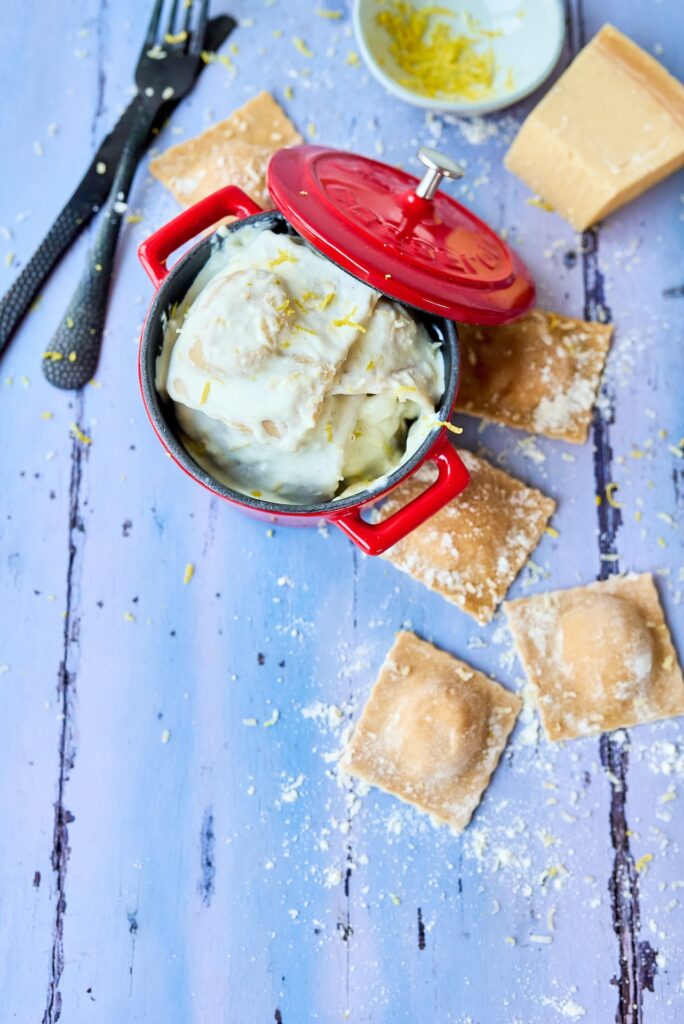


Have you ever wondered how to make fish tasty and enjoyable for children? These rosemary ravioli with salmon and cheese are full of flavor and balance, and should appeal to at least most children. :) Making ravioli is a fun process in itself, which takes time, but with children and good company, the evening in the kitchen will fly by. And if you start making ravioli, it's worth making multiple batches right away and putting the remaining raw ravioli in portions in the freezer. This way, sometimes on a weekday evening, it's especially convenient to take homemade ravioli from the freezer into a pot and enjoy a particularly tasty dinner with little effort.
The main thing when making ravioli is the elasticity of the dough and then the technique of shaping the ravioli. For the dough, be sure to use a higher-quality wheat or spelt flour with enough gluten and allow the dough to stand before rolling so that the gluten can work its magic. You can start shaping the finished dough into thin strips using a pasta machine - start at a higher setting and move thinner and thinner. Place the finished dough strips next to each other on a lightly floured work surface and then you can start filling the ravioli. Place the fillings on the dough strip about 3 cm apart. Then place another dough strip on top and gently press, moving away from the filling and pressing out all the air from the center. Air bubbles are the reason why the ravioli can later open during cooking. If you want a more secure attachment, spread egg yolk between the dough strips to stick them. Press the dough sheets together tightly, making sure that there are no air bubbles in the filling area or between the dough strips, and then cut the ravioli apart.
To store, place them alternately in boxes with baking paper or in plastic bags with a grip and put them in the freezer.